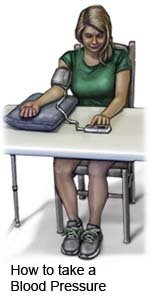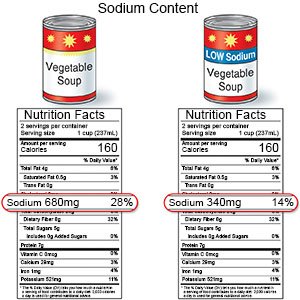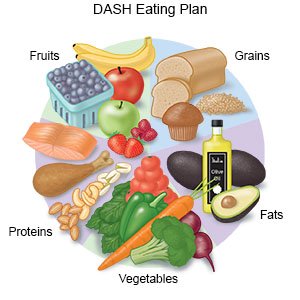Pulmonary Arterial Hypertension
Medically reviewed by Drugs.com. Last updated on Sep 23, 2025.
AMBULATORY CARE:
Pulmonary arterial hypertension (PAH)
is a condition that increases pressure in your pulmonary artery. The pulmonary artery is the large blood vessel that brings blood from your heart to your lungs.
 |
Common signs and symptoms:
- Feeling weak and tired
- Weight gain or lack of appetite
- Shortness of breath with exercise
- Swelling in your ankles, legs, or abdomen
- Chest pain or heart palpitations (strong, fast heartbeats)
- Dizziness or feeling faint
- Cough, hoarseness, or wheezing
Call your local emergency number (911 in the US) if:
- You have chest pain or heart palpitations.
- You have shortness of breath at rest, especially when you lie down.
- Your lips or fingers turn blue.
Seek care immediately if:
- You are confused or feel like you are going to faint.
- Your legs or ankles are swollen.
- You cough up blood.
Call your doctor if:
- You have a fever.
- Your symptoms keep you from doing your daily activities.
- Your fingers or toes are clubbed (the ends are round and thick).
- You have questions or concerns about your condition or care.
Treatment for PAH
may include any of the following:
- Medicine may be given to improve blood flow, get rid of extra fluid, or prevent blood clots. Blood clot medicine may make you bruise or bleed more easily. Use a soft toothbrush and an electric shaver to prevent bleeding.
- You may need extra oxygen if your blood oxygen level is lower than it should be. You may get oxygen through a mask placed over your nose and mouth or through small tubes placed in your nostrils. Ask your healthcare provider before you take off the mask or oxygen tubing.
- Surgery may be used to help blood flow from one part of the heart to another. You may need lung or heart transplant surgery if other treatments do not work and your condition is severe.
Manage PAH:
- Check your blood pressure (BP) at home. Sit and rest for 5 minutes before you take your BP. Extend your arm and support it on a flat surface. Your arm should be at the same level as your heart. Follow the directions that came with your BP monitor. If possible, take at least 2 BP readings each time. Take your BP at least twice a day at the same times each day, such as morning and evening. Keep a record of your BP readings and bring it to your follow-up visits. Ask your healthcare provider what your BP should be.

- Limit sodium (salt) as directed. Too much sodium can affect your fluid balance. Check labels to find low-sodium or no-salt-added foods. Some low-sodium foods use potassium salts for flavor. Too much potassium can also cause health problems. Your provider will tell you how much sodium and potassium are okay for you to have in a day. Your provider may recommend that you limit sodium to 2,300 mg a day.

- Follow the meal plan recommended by your provider. A dietitian or your provider can give you more information on low-sodium plans or the DASH (Dietary Approaches to Stop Hypertension) eating plan. The DASH plan is low in sodium, unhealthy fats, and total fat. It is high in potassium, calcium, and fiber.

- Limit liquids as directed. You may need to drink less liquid to help balance your fluid level. Ask how much liquid you should drink each day. Your provider will give you an exact amount of liquid to drink each day. You may be limited to less than 2 liters a day.
- Do not smoke. Nicotine and other chemicals in cigarettes and cigars can increase your BP and also cause lung damage. Ask your provider for information if you currently smoke and need help to quit. E-cigarettes or smokeless tobacco still contain nicotine. Talk to your provider before you use these products.
- Limit or avoid alcohol. Alcohol can make it hard for you to control your BP. Limit alcohol to 1 drink within 24 hours if you are female. Limit alcohol to 2 drinks within 24 hours if you are male. A drink of alcohol is 12 ounces of beer, 5 ounces of wine, or 1½ ounces of liquor.
- Be physically active, as directed. Physical activity, such as exercise, may help decrease your symptoms and improve your heart function. Physical activity also helps with weight control. Do not start a physical activity program before you talk with your provider.
- Avoid activities that raise your body temperature. Do not sit in a sauna, hot tub, or hot bath. This can lower your blood pressure and cause you to faint.
- Talk to your provider about pregnancy if you are female. Pregnancy may not be safe for you. You may need to change your birth control method if you currently use birth control pills. Birth control pills may increase your risk for blood clots. Your provider can help you choose other methods that work for you.
- Manage health conditions affecting PAH. You may need treatment for sleep apnea, hypertension, or other medical conditions. Ask your provider for more information.
- Do not travel to high altitudes unless your provider says it is okay. You may need to bring extra oxygen if you are traveling to a high altitude or are flying.
Treatment options
The following list of medications are related to or used in the treatment of this condition.
Follow up with your doctor or specialist as directed:
You may need regular testing to monitor your symptoms. Write down your questions so you remember to ask them during your visits.
© Copyright Merative 2025 Information is for End User's use only and may not be sold, redistributed or otherwise used for commercial purposes.
The above information is an educational aid only. It is not intended as medical advice for individual conditions or treatments. Talk to your doctor, nurse or pharmacist before following any medical regimen to see if it is safe and effective for you.
Learn more about Pulmonary Arterial Hypertension
Treatment options
Care guides
Medicine.com guides (external)
Further information
Always consult your healthcare provider to ensure the information displayed on this page applies to your personal circumstances.
